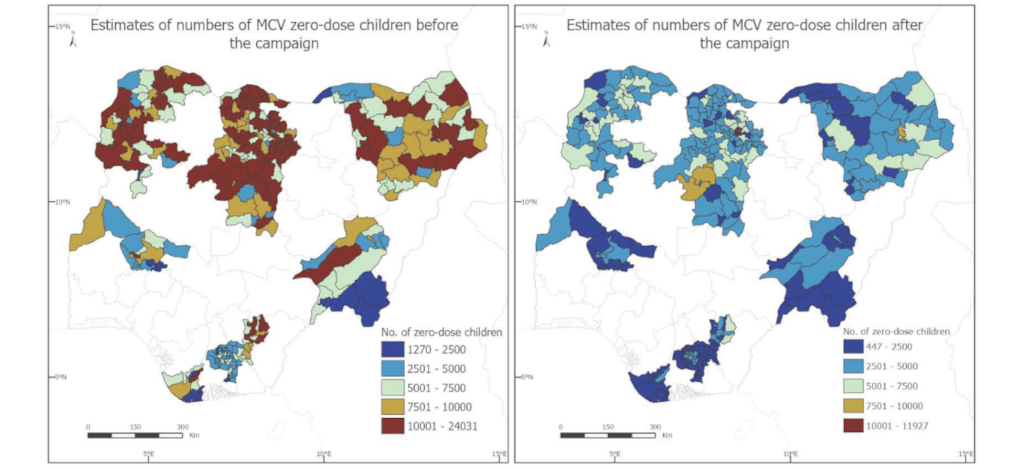A new study led by WorldPop researchers has produced detailed maps showing where children missed out on measles vaccination during Nigeria’s 2021 vaccination campaign, providing crucial insights to help health officials reach underserved communities.
The research, published in the journal Vaccines, analyzed data from 13 Nigerian states to identify areas where children remained unvaccinated both before and after the measles vaccination campaign. By combining survey data with geospatial techniques, the team created high-resolution maps showing vaccination coverage patterns down to local levels, including health facility catchment areas.
“Understanding exactly where unvaccinated children live is crucial for improving vaccination programmes,” explains Dr. C. Edson Utazi, the study’s lead author from WorldPop at the University of Southampton. “Our analyses revealed that while the campaign reduced the numbers of unvaccinated children overall, significant gaps remained in certain areas, particularly in northeastern and northwestern states.”
Key findings show that some local government areas likely had more than 5,000 unvaccinated children even after the campaign. The research also demonstrated that larger numbers of unvaccinated children lived closer to health facilities, highlighting opportunities for strengthening routine immunization services.
The study introduces innovative methods for mapping health facility catchment areas and identifying buildings within them, providing practical tools for healthcare workers to reach unvaccinated children. This detailed geographic information can help officials plan targeted follow-up vaccination efforts more effectively.
This work supports Nigeria’s efforts to eliminate measles and aligns with global immunization initiatives, including the World Health Organization’s Immunization Agenda 2030. The mapping approaches developed could also be valuable for other countries working to improve their vaccination coverage.
The research was conducted in collaboration with the National Primary Health Care Development Agency, the National Bureau of Statistics, the World Health Organization, and Gavi, the Vaccine Alliance.
For more information, read the full paper: “Geospatial Variation in Vaccination Coverage and Zero-Dose Prevalence at the District, Ward and Health Facility Levels Before and After a Measles Vaccination Campaign in Nigeria”: https://www.mdpi.com/2076-393X/12/12/1299.



